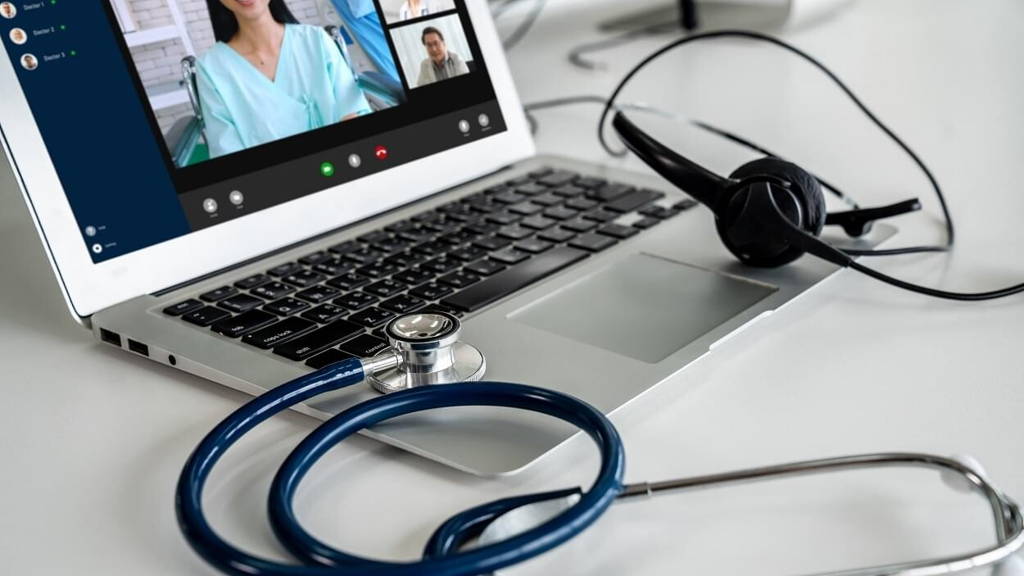Anyone who has spent a few days in a hospital at least once knows this intense feeling of wanting to return home, a place where we feel safe and comfortable, no matter how modern the health centre was.
The fixed border between home and healthcare is becoming blurred. Just look back. Until recently, specialist examinations, assessments of health condition and rehabilitation were only possible in a well-equipped doctor’s office. But, with computers, smartphones, the Internet, modern technologies such as home-use diagnostic kits and sensors built into smartwatches, the patient can be at home while at the same time being monitored and treated by their doctor.
Technological progress has come so far that virtual care has become effective, safe and affordable. For example, a randomized controlled study published by Brigham Health (USA) researchers showed a 38% lower cost of inpatient care conducted at a patient’s home without significant quality differences.
The EY report 'It’s time for healthcare CEOs to rethink their home health strategy' identifies critical healthcare scenarios at home: post-acute care (surgery, long-term care, rehabilitation), hospital at home (continuation of treatment after discharge from hospital), chronic condition management (continuous health monitoring), prevention and wellness (teaching a healthy lifestyle), and remote healthcare.
Post-acute care
According to the OECD report “Health at a Glance,” the average hospital length of stay decreased between 2000-2018 from 10 to 7.5 days. For procedures such as heart failure surgery or hip replacement, the reduction in hospitalization time is up to 50%. This is primarily due to the advancement in medical technologies and the increasing demand for certain hospital services – a patient must be quickly discharged home so that they don’t block the next patient. The economic balance is not irrelevant as well. Each day of hospital stay is associated with enormous costs for the healthcare system.
Hospital at home
The number and capacity of hospitals are limited, which got particularly strongly visible during the COVID-19 pandemic. A blessing in disguise is that it was the first pandemic in the digital era. Thanks to this, patients in stable health conditions could be treated at home. The patients’ condition was monitored 24/7 using electronic thermometers, pulse oximeters and blood pressure monitors.
It is not just COVID-19 patients that can be treated at home. The U.S. Centers for Medicare & Medicaid Services (CMS) identified 60 different acute conditions that can be safely treated or managed at home using remote monitoring/care and daily personal visits. For example, congestive heart failure, asthma, pneumonia, chronic obstructive pulmonary disease, kidney and urinary tract infections. Technologies give patients 24/7 access to healthcare teams. Data collected by remote medical devices are transferred in real-time to telemedicine centres and analysed to immediately notify the care team of any alarming change in condition. In addition, increasingly sophisticated medical tests can be performed using mobile laboratories and home test kits.
Chronic condition management
Statistically, 3 out of 5 deaths result from chronic disorders. Unfortunately, their treatment on an outpatient basis is severely limited – success depends on lifestyle changes and patient compliance. Modern medicines make it possible for patients with diabetes or hypertension to enjoy a long and active life. However, self-engagement and health literacy are required for disease management consistent with scientific guidelines and physician guidance. This can be supported by applying health apps and integrated monitoring systems: ECG in a smartwatch for people with heart diseases, digital glucometers for patients with diabetes, etc.
The authors of the EY report estimate that the use of remote healthcare and digital health applications to actively manage chronic conditions such as diabetes, depression and mental health will triple, covering between 30% and 45% of Americans.
Prevention and wellness
Progress in preventive care and wellness has accelerated since start-ups have started to develop and roll out on the market advanced digital solutions, such as fitness/mental health apps or wearables. According to RockHealth, digital health start-ups in Q1 2021 got US$ 6.7 billion in funding. The health market also attracts big players – big tech companies such as Apple and Samsung introduce health management/monitoring functions to smartphones. Pharmaceutical companies are also looking to capitalize on the digitization trend by developing so-called digital therapeutics (DTx).
Care at home will become a permanent part of hybrid and connected healthcare where the location the service is provided is not relevant any-more.
Seamless contact with patients and real-time access to critical health data are essential in designing a care ecosystem that is safe, consistent, and understandable for the patient. The scope of technologies to enable the shift from hospital to home care is expanding. What is still lacking is an updated legislative framework to achieve priority goals and benefits in health systems.
To download the full EY report, click here.







